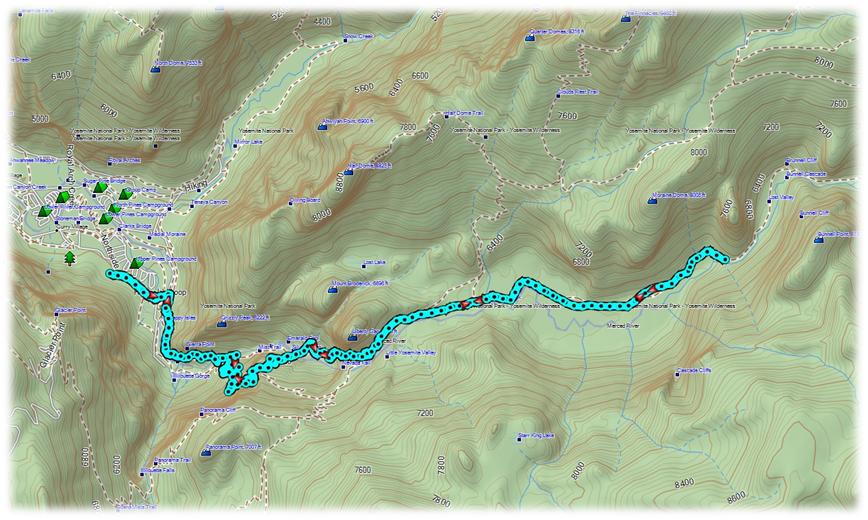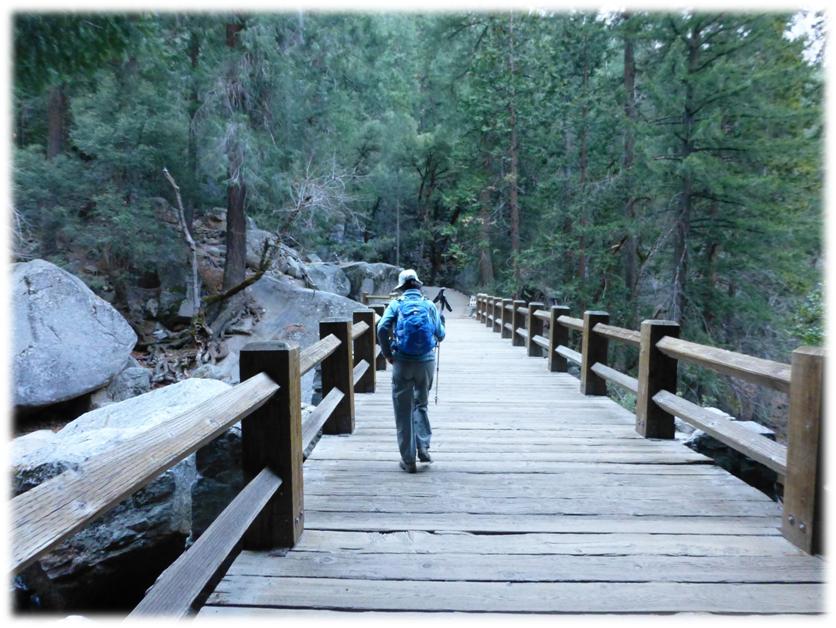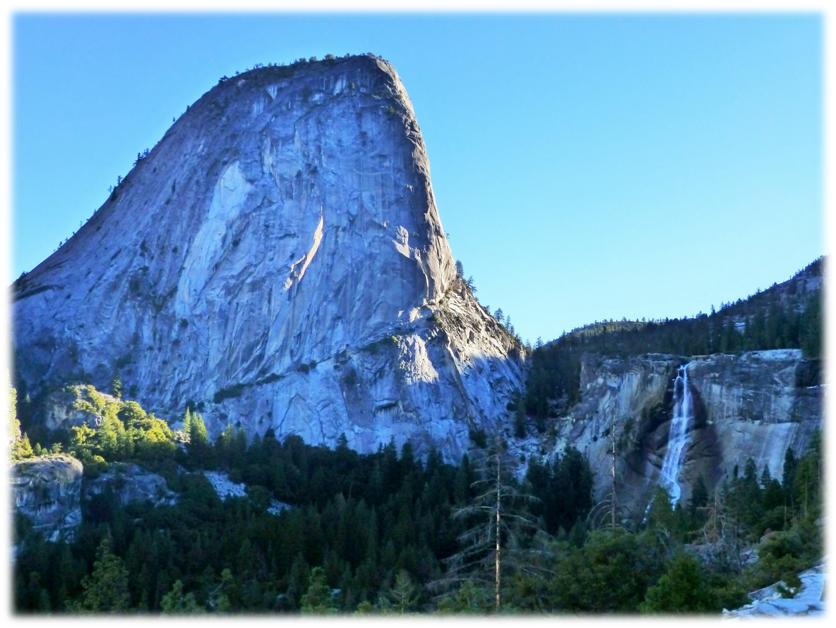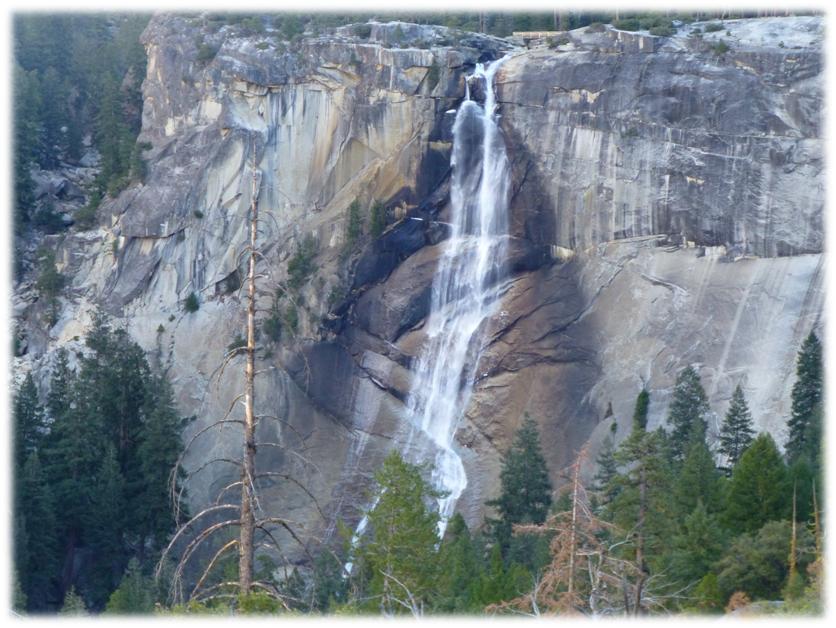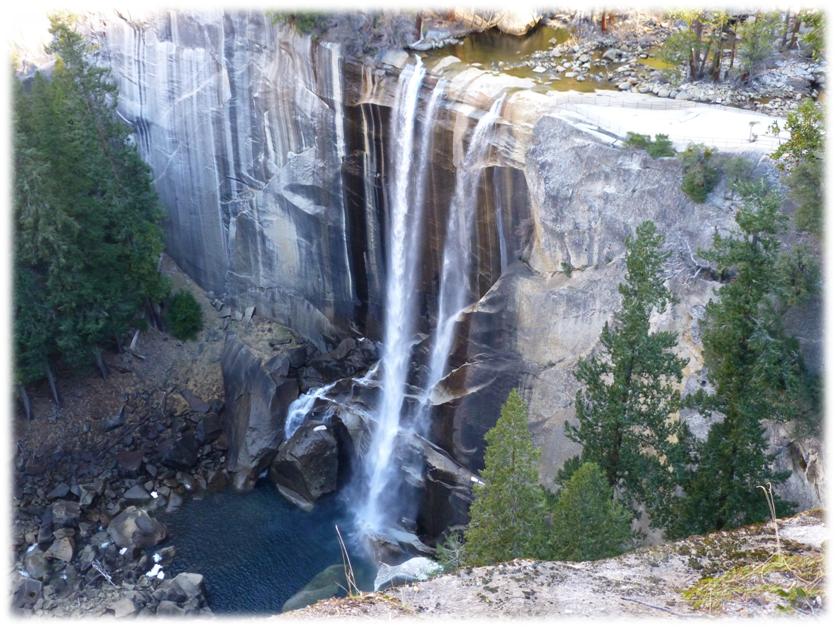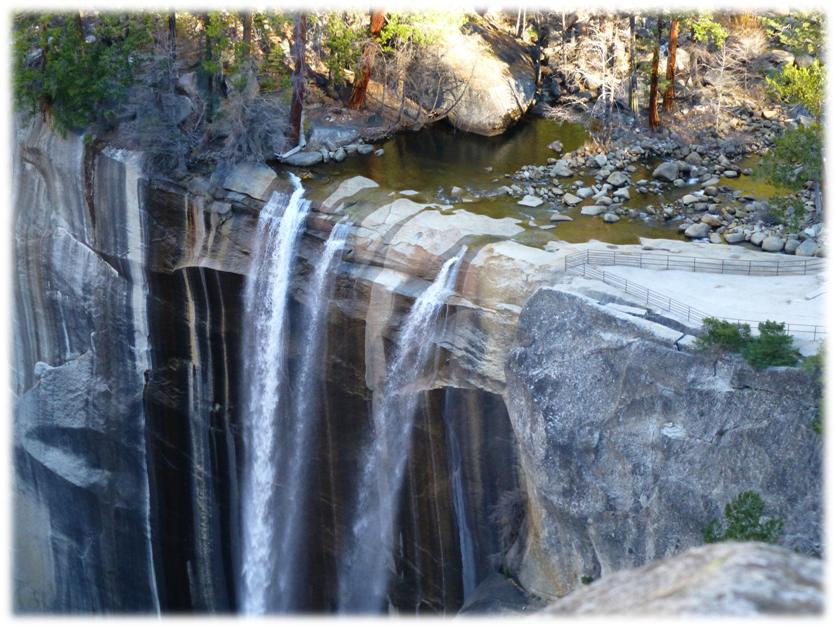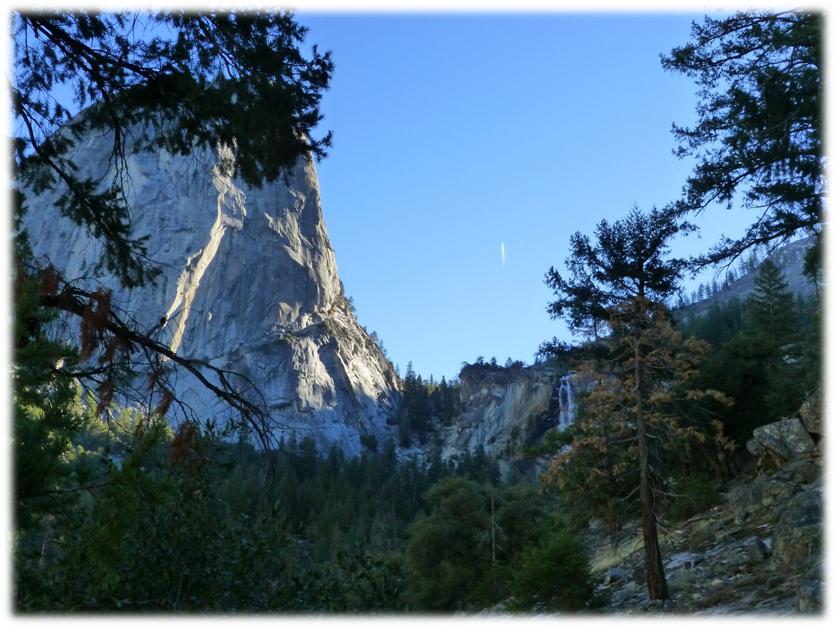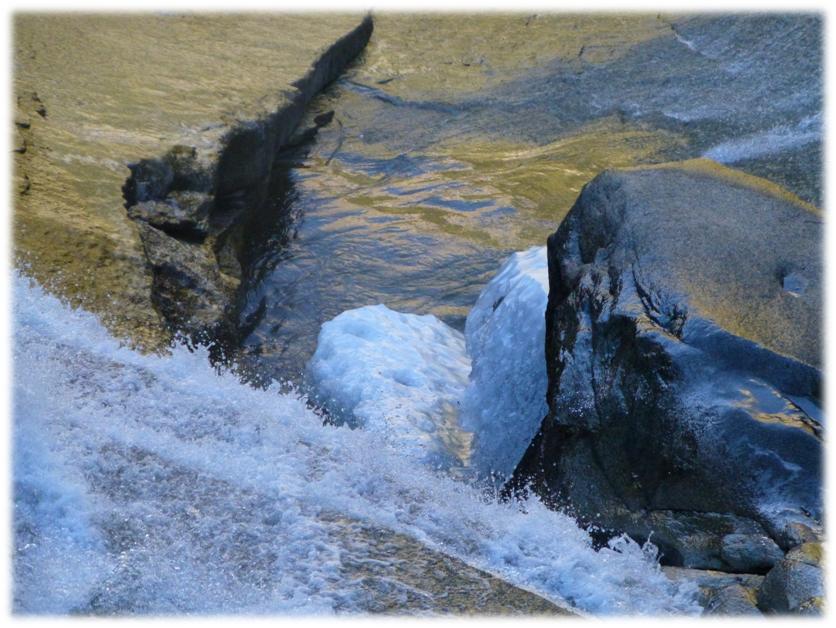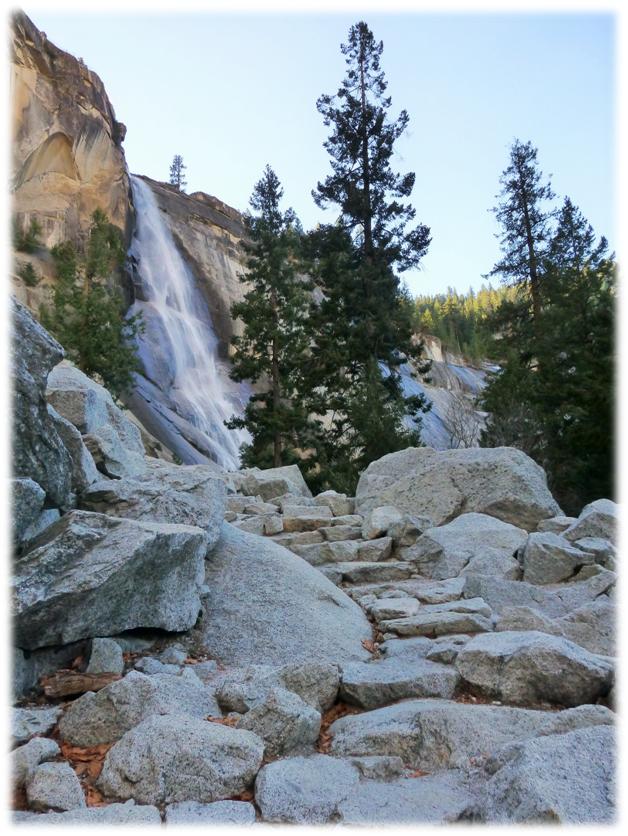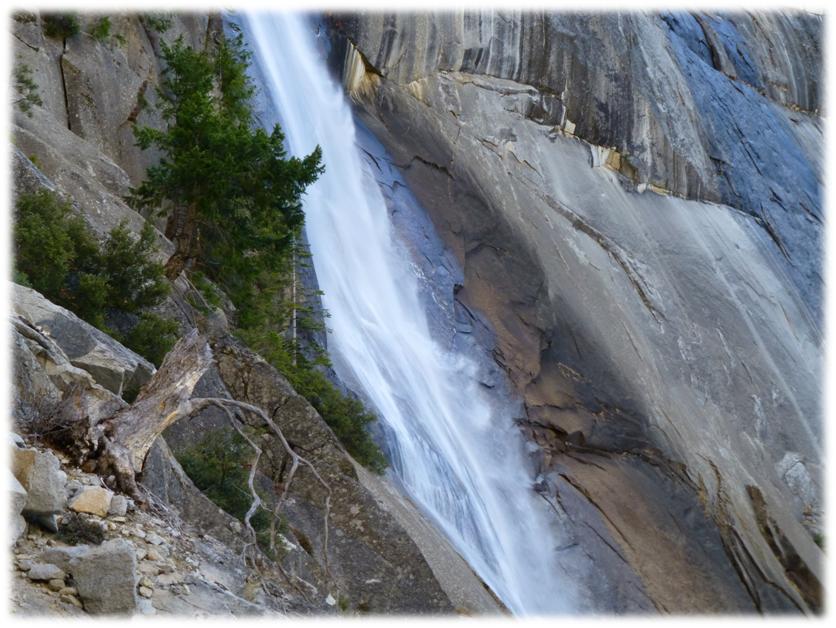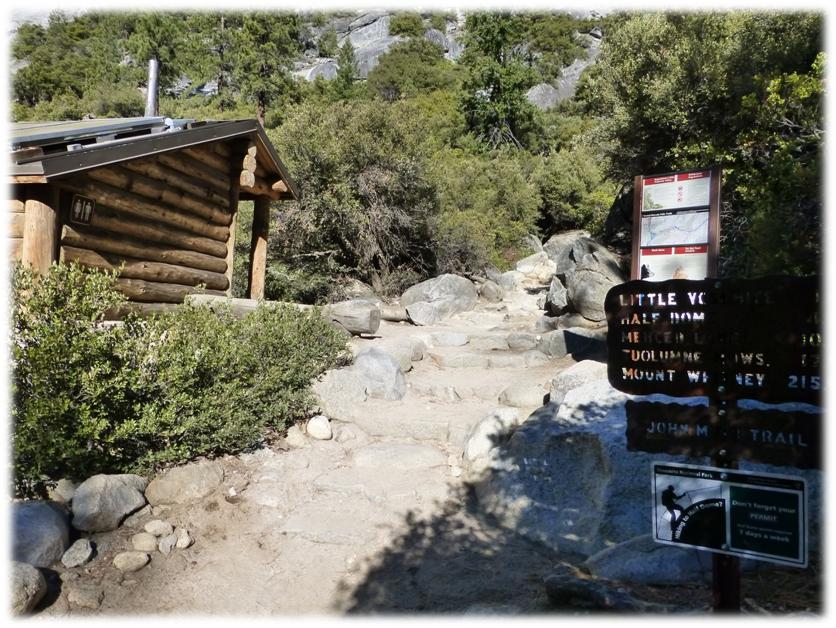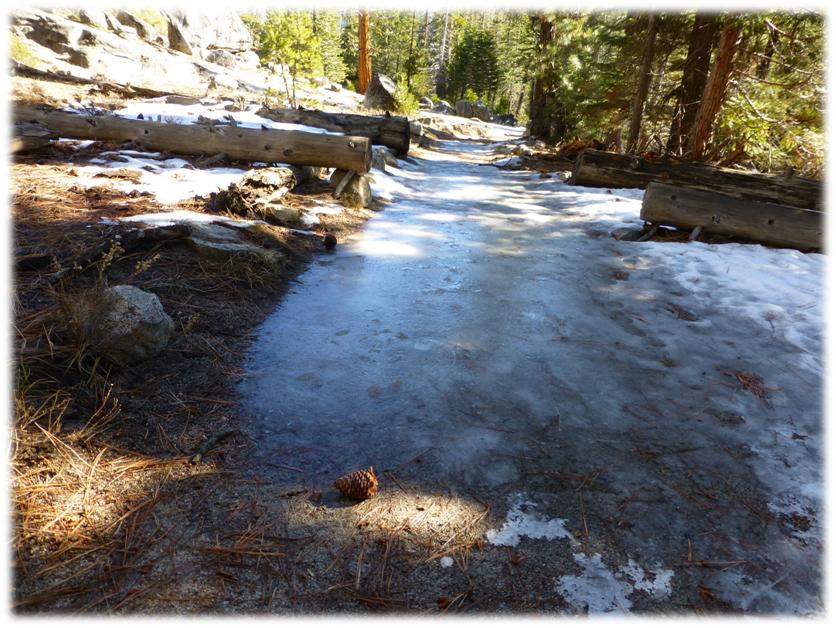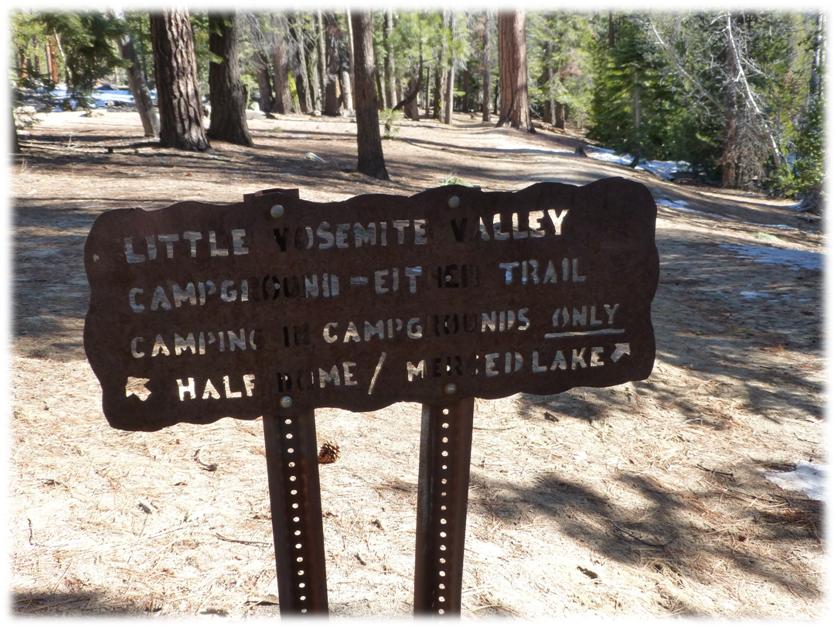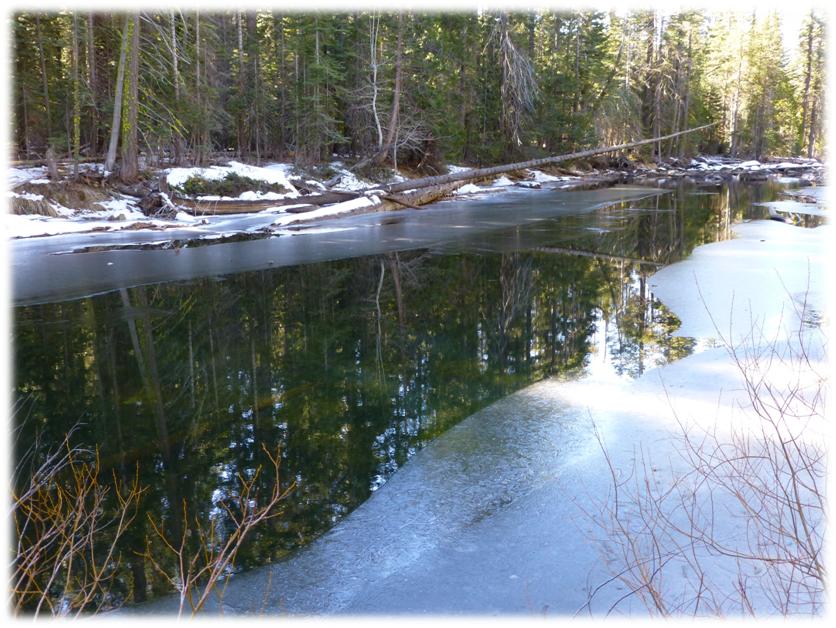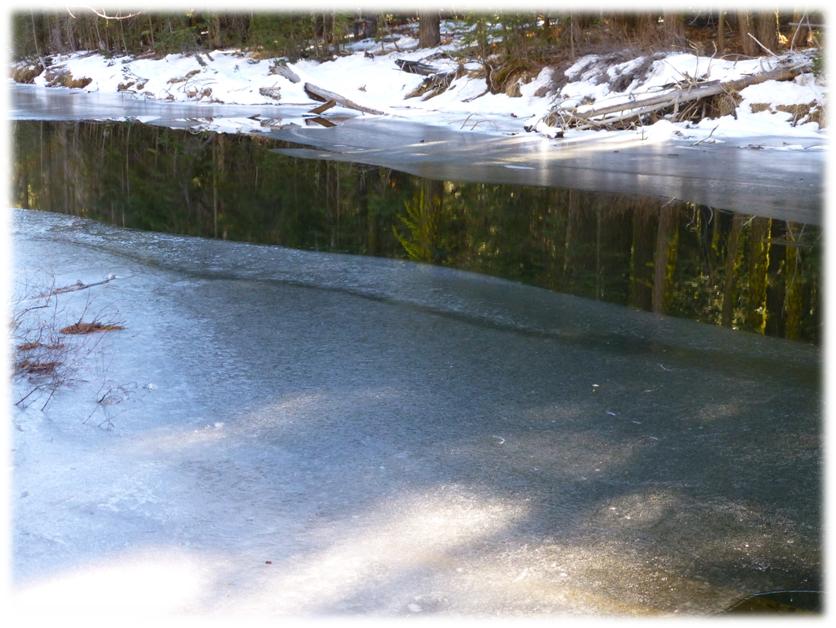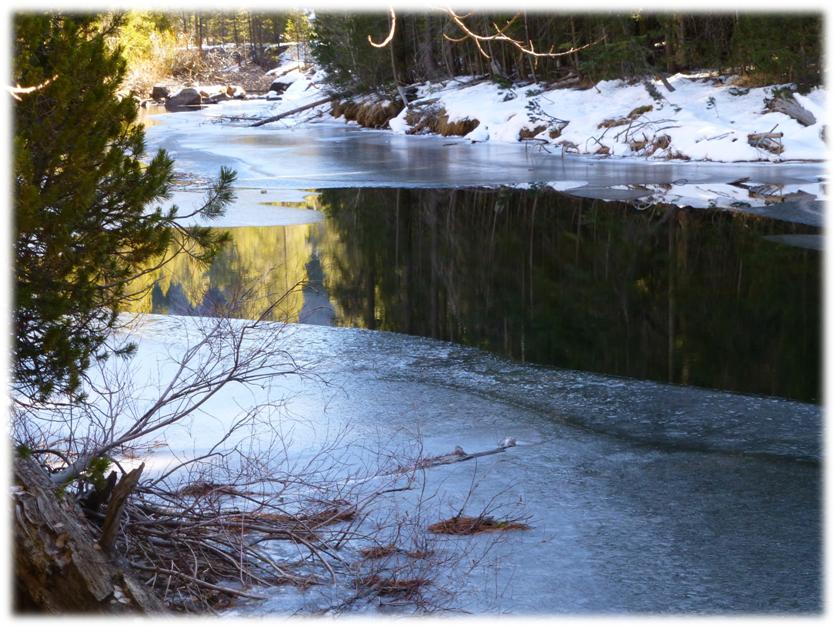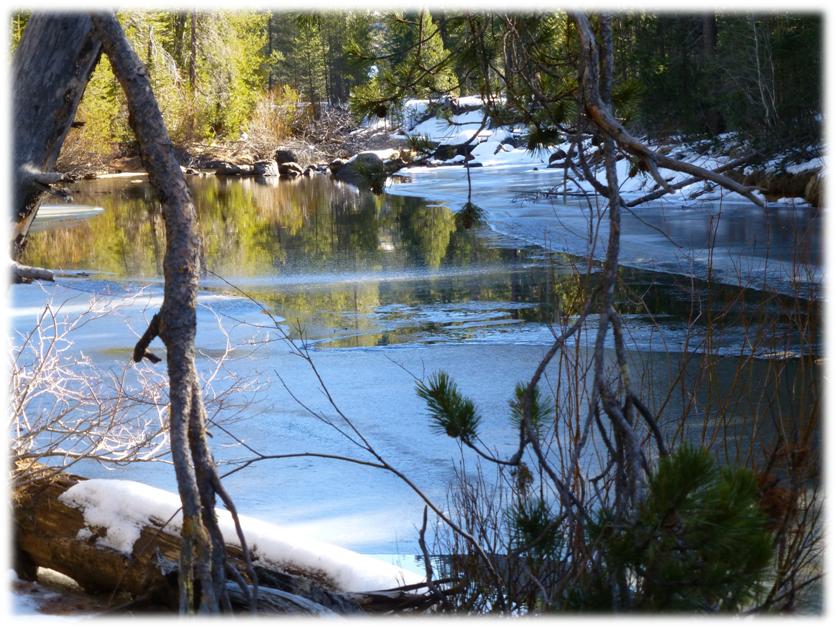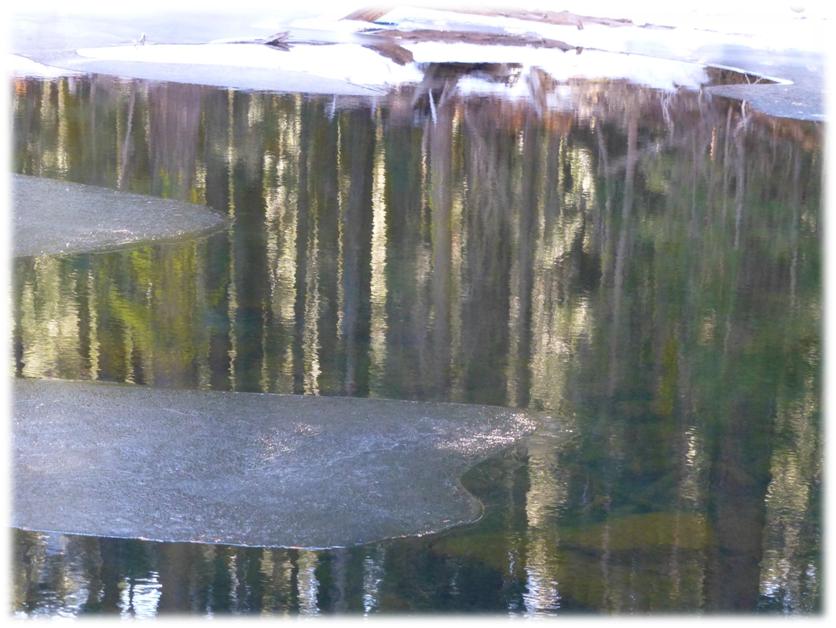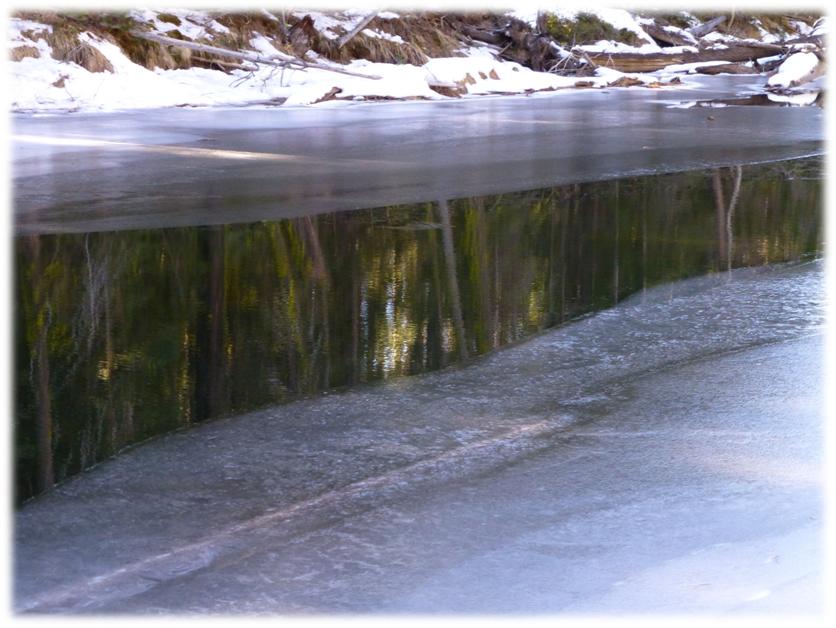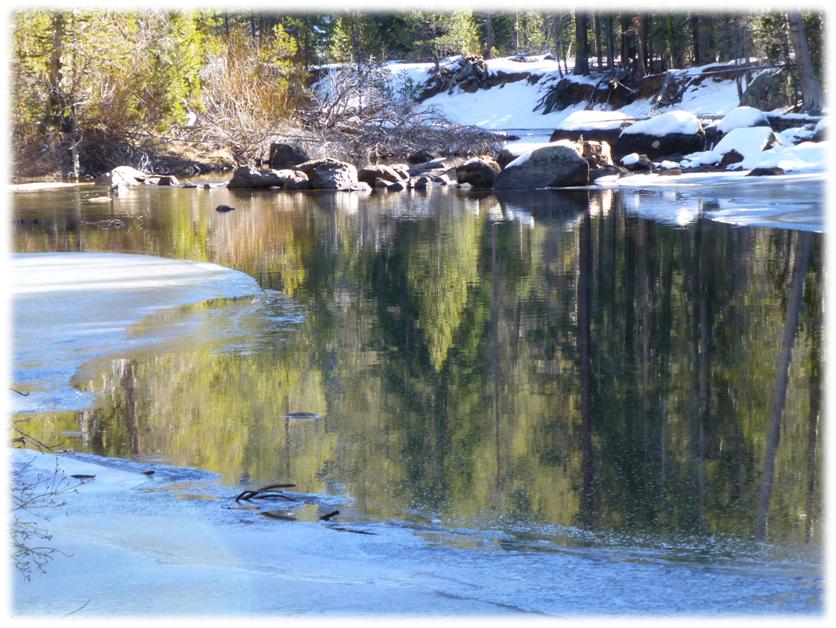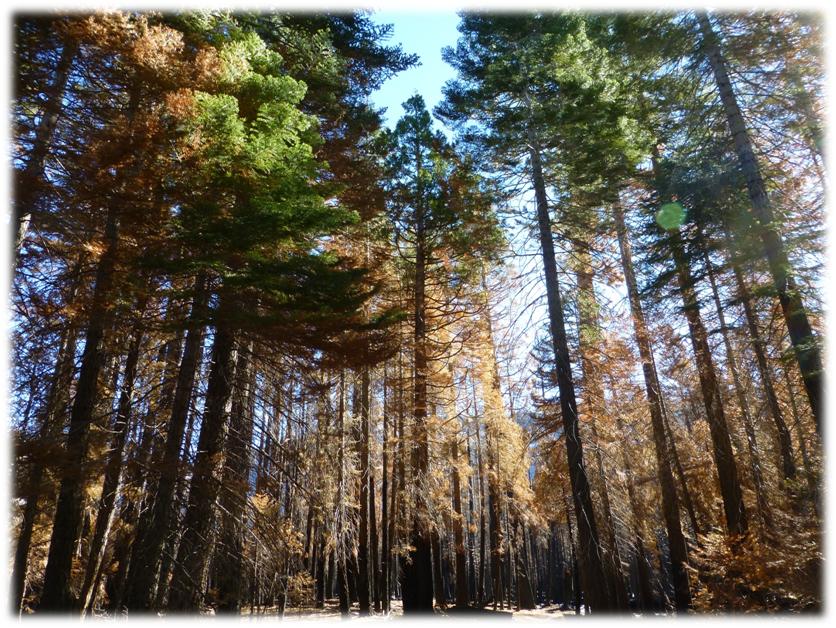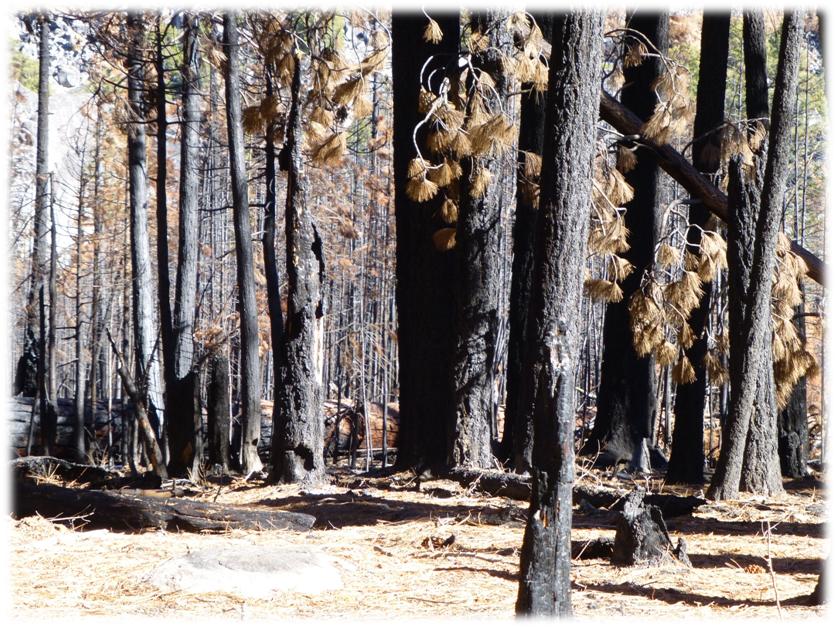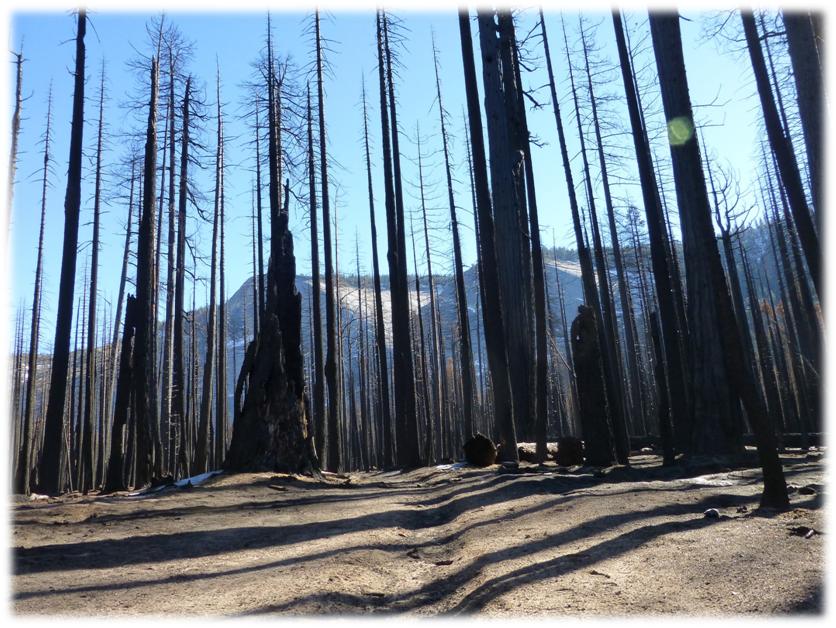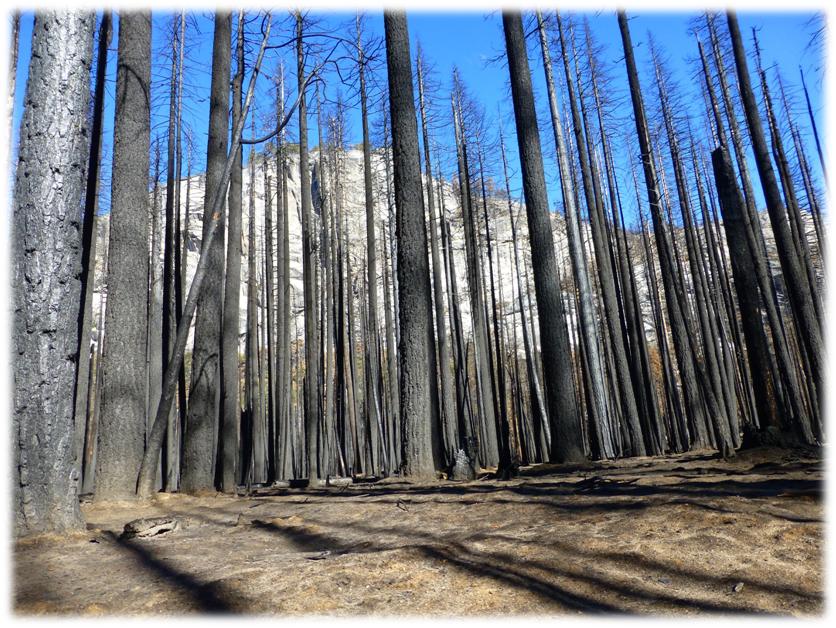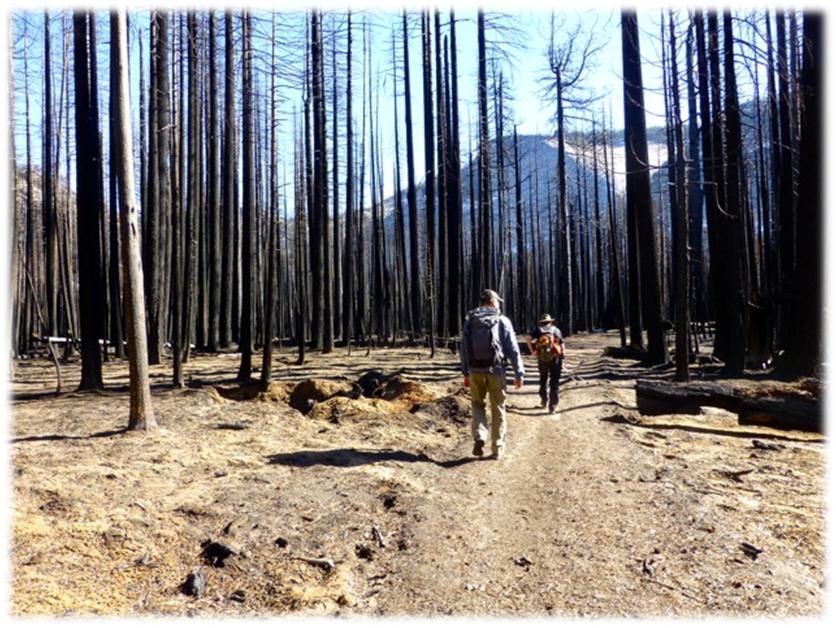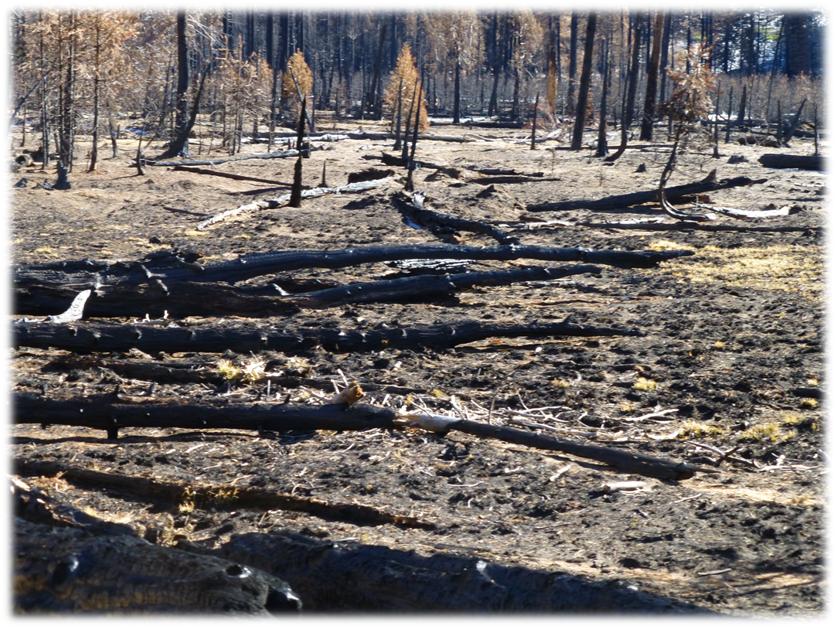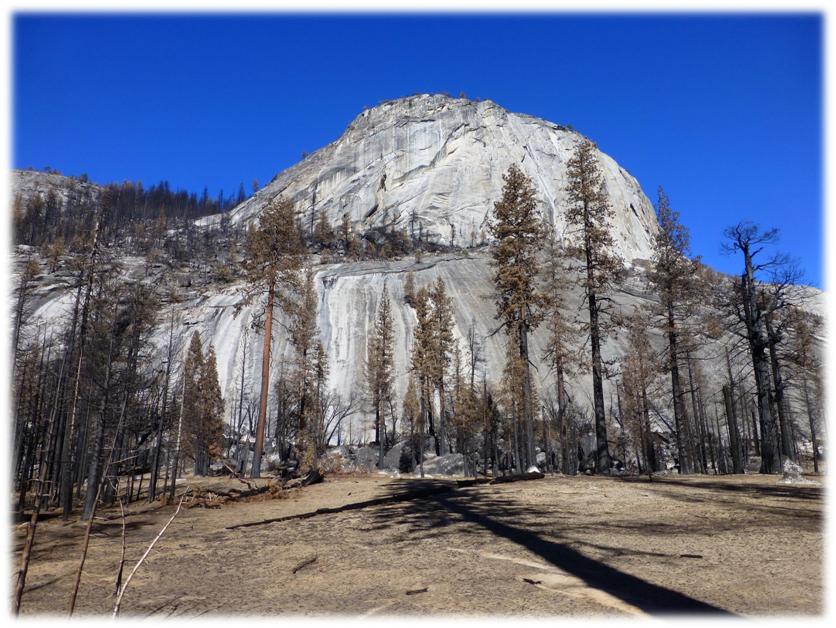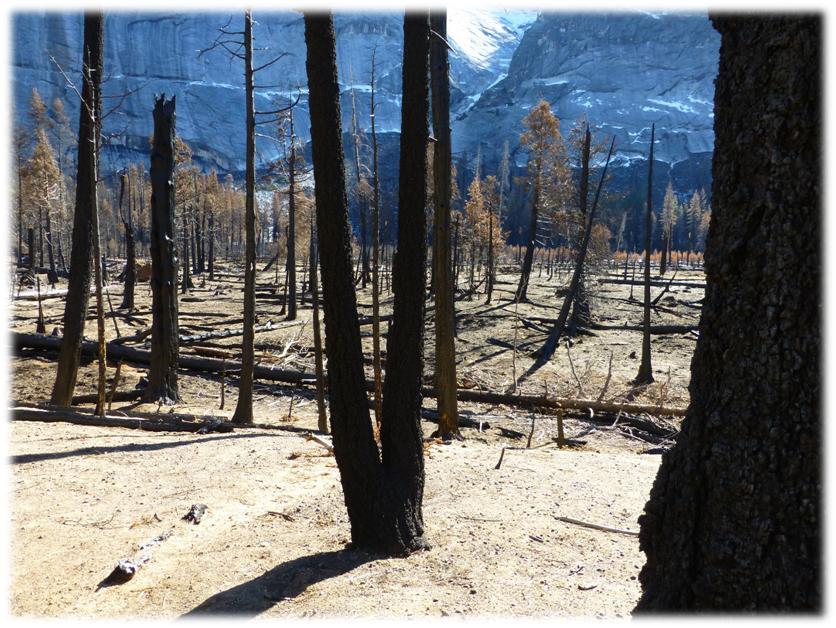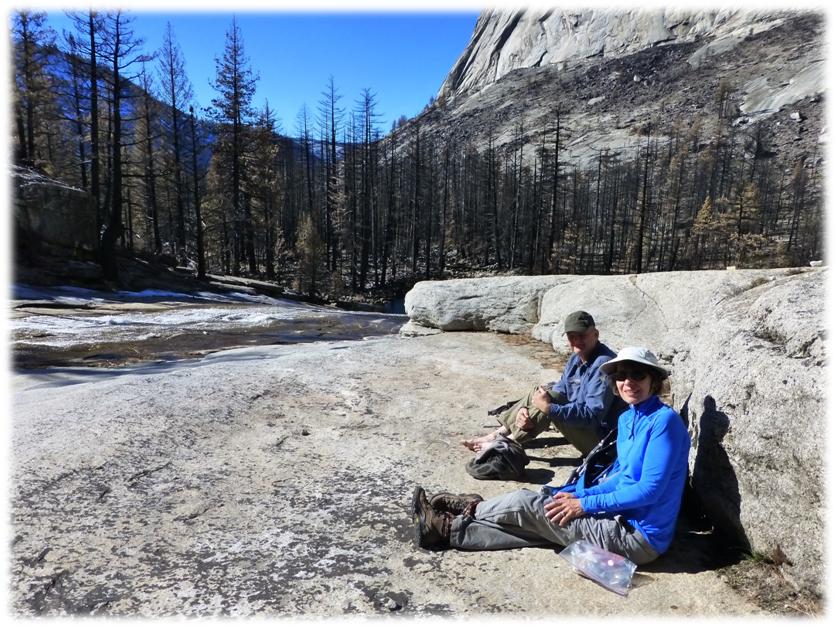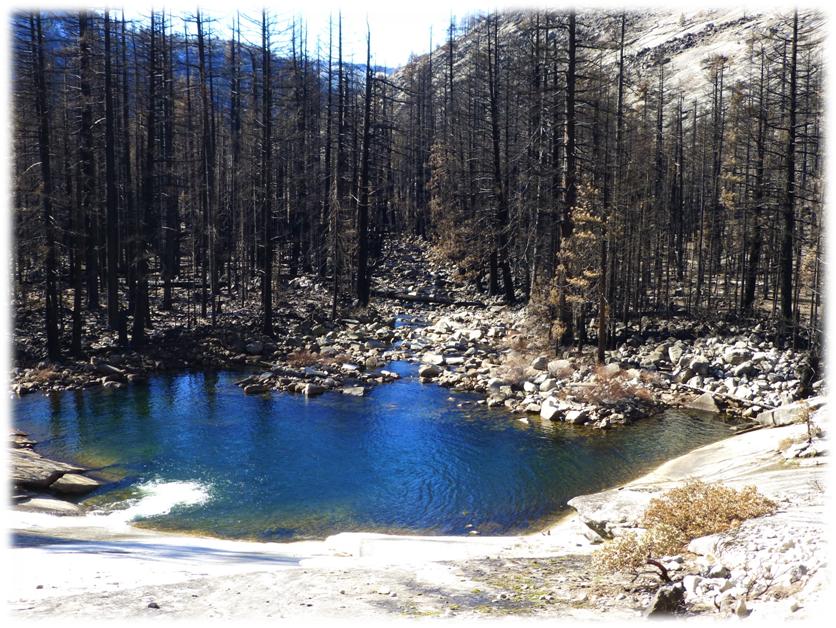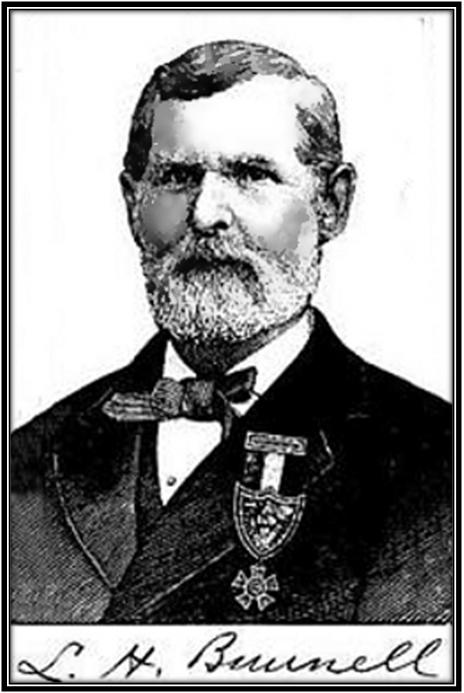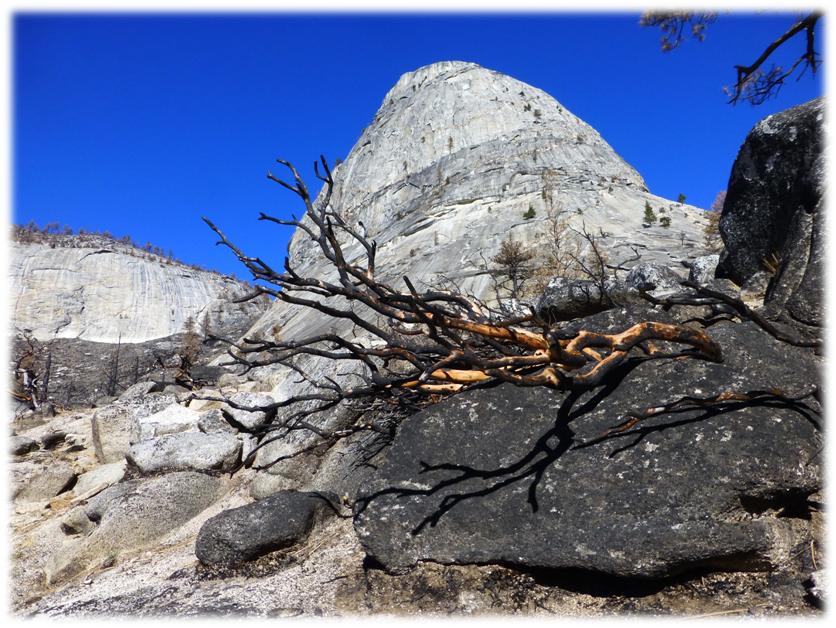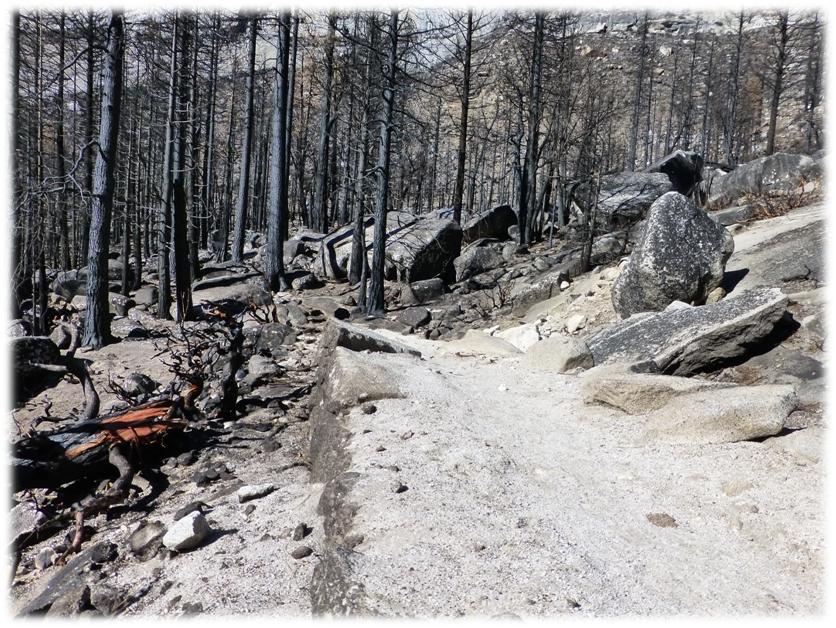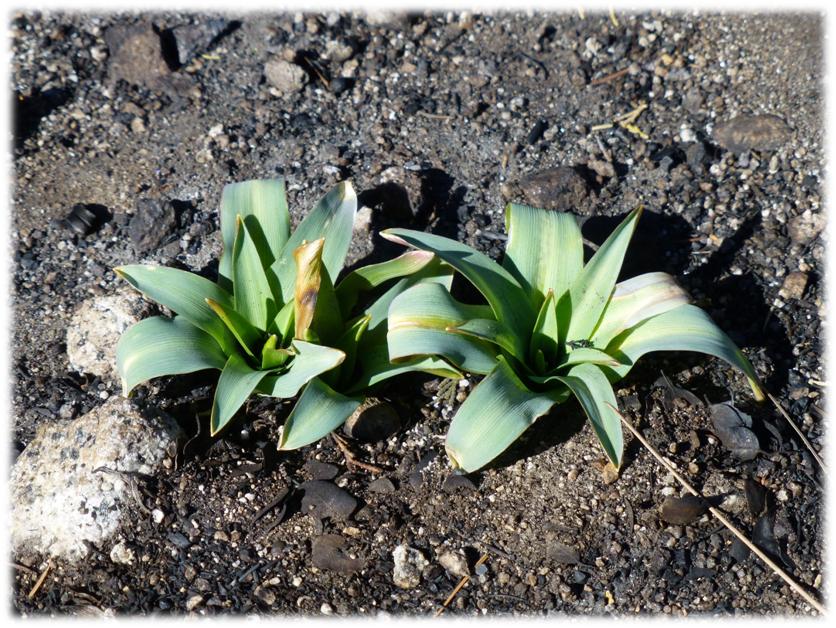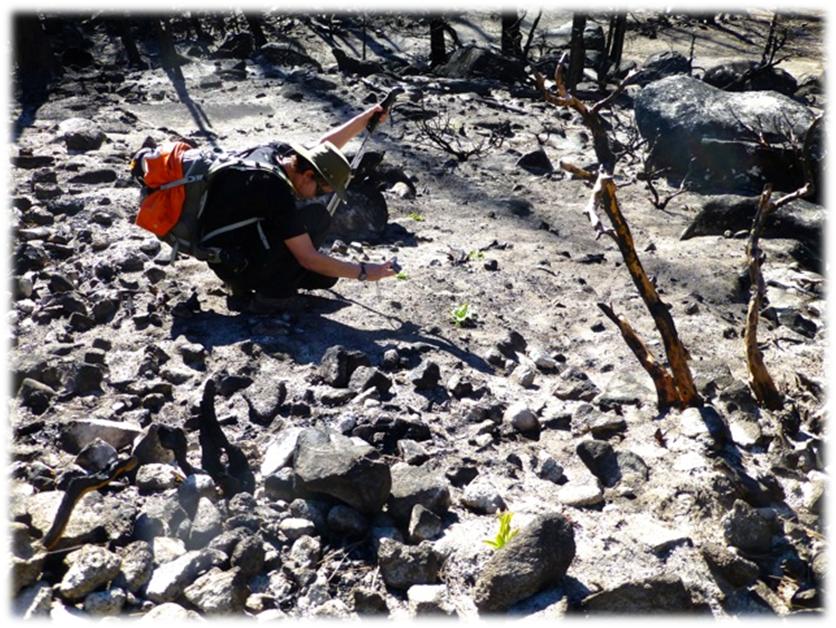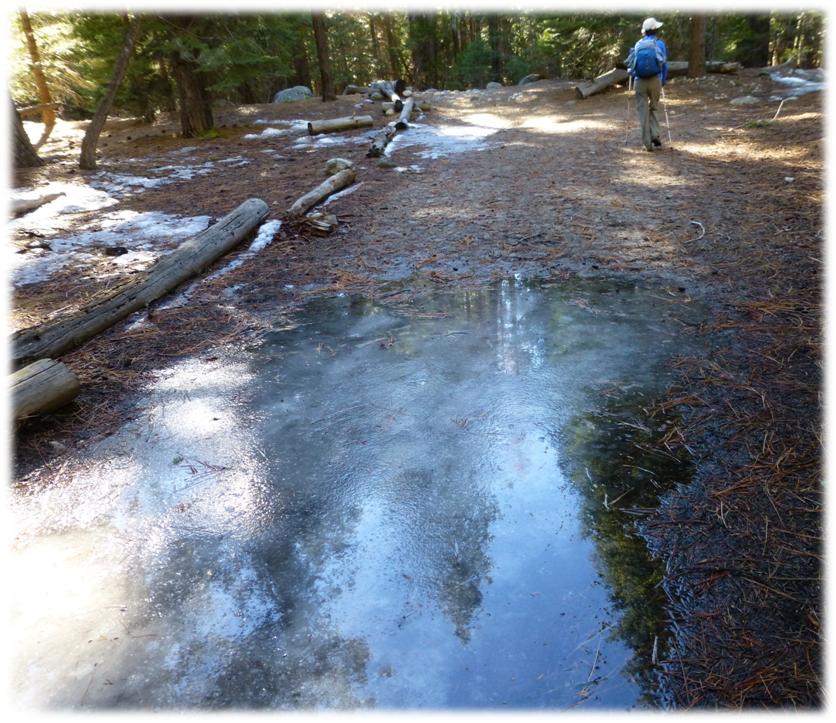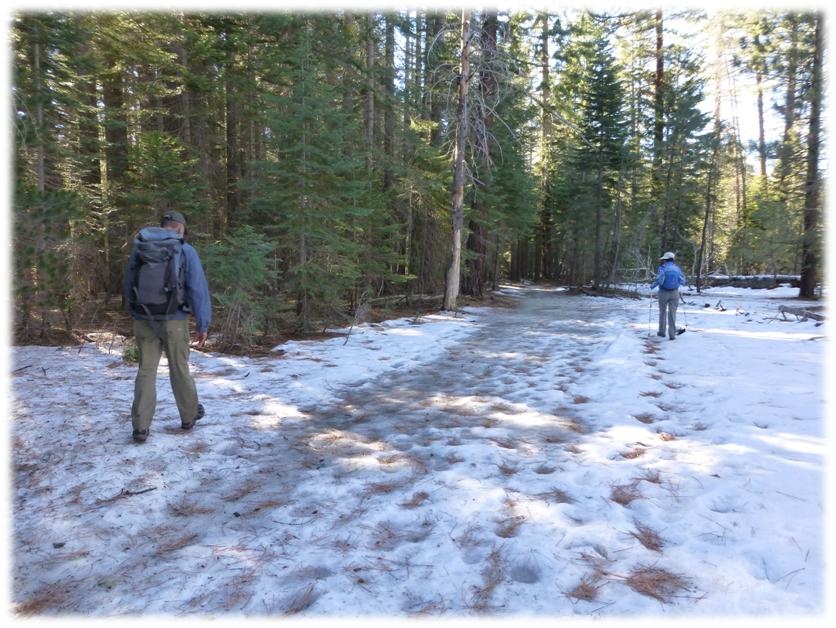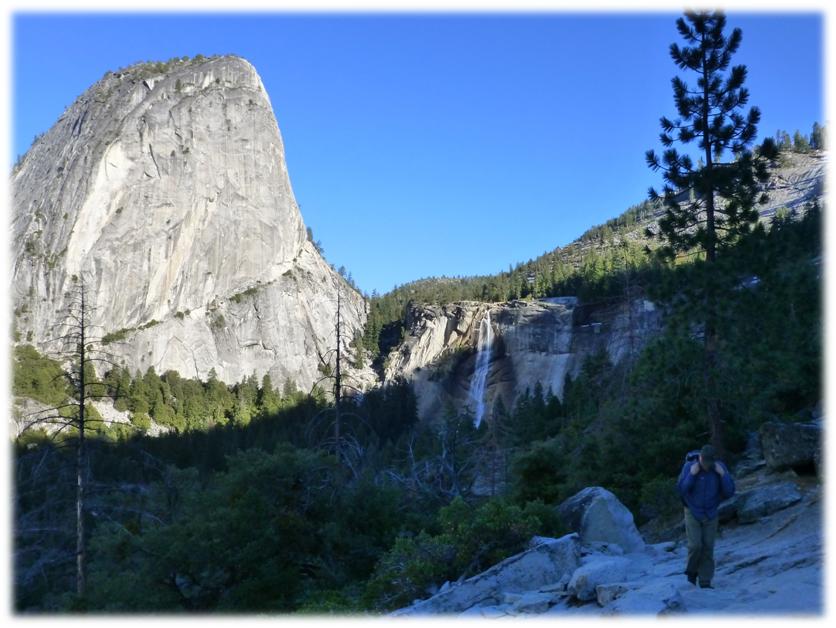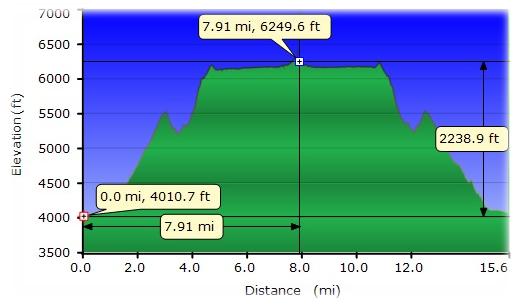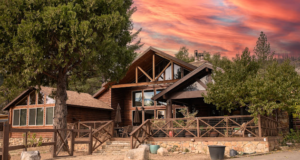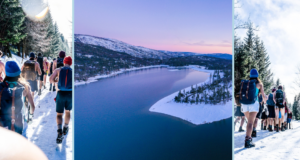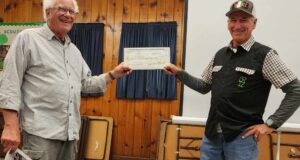We had another great workout with incredible scenery that included views of Half Dome and other prominent high points, Vernal and Nevada Fall and the icy Merced River. This was our first look at the devastation in Little Yosemite Valley that was left over from the Meadow Fire last year. That was very sad to see.
Where:Yosemite National Park
Distance: 17.8 Miles
Difficulty: Moderate to Strenuous
Elevation Range: 4,003′ – 6,303′
Date: January 23, 2015
Maps: El Capitan Topographic Quad
We parked at the Backpacker Parking Lot just east of the day use parking lot in Curry Village, storing our snacks in the bear lockers. We walked on the path, crossing the Merced River on the bridge, to the John Muir Trailhead. We then headed up the John Muir Trail to Vernal Fall. You can also take the Mist Trail, which will cut off some mileage but we were afraid that it might be icy and didn’t want to take the chance or risk.
We crossed the Merced River again, following the signs for the John Muir Trail. As we reached the high point of this trail near where it intersects with the John Muir Pack Trail, we kept following the signs to Vernal Fall. This route required us to climb uphill, then back downhill, one of the downsides of not taking the Mist Trail. As we topped out in this section we could begin to see Vernal Fall.
As we headed father along the trail, we began to get some wonderful views of Vernal Fall, droping 320 feet into a pool, its waters being blown by the wind in places. Have you ever wondered how Vernal Fall got its name? Well, here is some historic information from the 1926 book Place Names of the High Sierra by Francis P. Farquhar.
“The middle or main branch [of the Merced] was designated by the Yosemites —from the fork of the Glacial branch [Illilouette Creek] up to the Vernal Fall —as Yan-o-pah, because they were compelled to pass through the spray of the Vernal, to them a ‘little cloud,’ while passing up this cañon. . . . I suggested Vernal, as an English name for Yan-o-pah. [May, 1851] . . . The cool, moist air, and newly-springing Kentucky blue-grass at the Vernal, with the sun shining through the spray as in an April shower, suggested the sensation of spring before the name of Vernal occurred to me.” (Bunnell: Discovery of the Yosemite, 1880, pp. 204-205.)
“While gazing at its beauties, let us, now and forever, earnestly protest against the perpetuation of any other nomenclature to this wonder than ‘Pi-wy-ack,’ the name which is given to it by the Indians, which means ‘a shower of sparkling crystals,’ while ‘Vernal’ could, with much more appropriateness, be bestowed upon the name-giver, as the fall itself is one vast sheet of sparkling brightness and snowy whiteness, in which there is not the slightest approximation, even in the tint, to any thing ‘vernal’.” (Hutchings: Scenes of Wonder and Curiosity in California, 1860, p. 113.)
“Pai-wai’ak (white water?), Vernal Fall. The common word for ‘water’ is kik’kuh, but a-wai’a means ‘a lake’ or body of water, in two languages.” (Powers: Tribes of California, in Contributions to North American Ethnology, III, 1877, p. 364.)
“Mr. Hutchings, in criticising the name Vernal, has misstated the Indian name for this fall, furnished him by myself. . . . The name given by the Yosemites to the Ten-ie-ya branch of the Merced was unmistakably Py-we-ack. This name has been transferred from its original locality by some romantic preserver of Indian names. While passing over to Yan-o-pah, it was provided with an entirely new signification. It is indeed a laughable idea for me to even suppose a worm- and acorn-eating Indian would ever attempt to construct a name to mean ‘a shower of sparkling crystals’.” (Bunnell: Discovery of the Yosemite, 1880, p. 207.)
We stayed on the trail, crossing the Merced River just above Vernal Fall. Looking above, I could see a glimpse of Nevada Fall. Looking below the bridge at Vernal Fall, I could see ice had formed all along the pool at the bottom of the Fall.
After crossing the bridge above Vernal Fall, we headed up the trail, up the switch backs toward Nevada Fall at the. The trail gives you some interesting side views of the Fall as you climb.
From Place Names of the High Sierra by Francis P. Farquhar, some information about Nevada Fall:
Discovered by a small squad from Major Savage’s party in Yosemite in 1851. The Indian name was Yo-wy-we, signifying the twist or squirm of the falling water. Bunnell suggested the name Nevada. “The Nevada Fall was so called because it was the nearest to the Sierra Nevada, and because the name was sufficiently indicative of a wintry companion for our spring [Vernal].” “The white, foaming water, as it dashed down Yo-wy-we from the snowy mountains, represented to my mind a vast avalanche of snow.” (Bunnell: Discovery of the Yosemite, 1880, p. 205.)
“‘Nevada’ and ‘Vernal,’ emblems eternal of winter and loveliest spring.” (Bunnell: Discovery of the Yosemite, 1880, p. 11.)
Once we got on top, instead of walking the short distance over to Nevada Fall, we followed the signs, heading toward Little Yosemite Valley, after making a stop at the restrooms. Those restrooms were very clean!
After a short ascent, the trail flattened out but when we hit the shade, we also started hitting the ice on the trail. Of course, we had packed our ice traction devices but once again we didn’t use them. We carefully walked along the trail when the ice got bad but looking back, we should have put them on.
We passed well signed trail junctions toward Merced Lake. The trail starts to follow the Merced River, which was iced over with glorious reflections.
We passed the Backpacker Campground, heading up the trail through Little Yosemite Valley. Now the sad part of the story begins. We reached the fire edge of the Meadow Fire, which started near Starr King Lake, during a lightning storm, on July 19, 2014. The fire was contained on September 29 and the most accurate acreage that I could find on the National Park Service’s site shows the final acreage at 4,772 acres.
This is the National Park Service report on the Meadow Fire September 4, 2014:
“Active Fires being managed for multiple objectives: Meadow (37 42.738 x 119 30.541 – Mariposa Co., 7,870′, August 16) This is a remote, hold-over lightning caused fire. Yosemite Fire Module 1 hiked into the fire area September 3. They are mapping, taking weather and monitoring the fire behavior. The fire is approximately 19 acres in size, with sixty percent of the perimeter active. It is creeping through red fir and lodgepole pine, and is surrounded by granite knobs. It is northeast of Mount Starr King and south of Starr King Meadow. Smoke from the fire is visible from many park locations, and in particular, Glacier Point area and in Yosemite Valley during the morning hours. Smoke is likely to continue to be visible until the park receives precipitation.”
I marked the trail’s entrance and exit in the Meadow Fire and it measured about 1.6 miles. We walked this entire distance through totally burned trees. No living trees are in this area, only standing dead tall trees and burned stumps. (Photo of Steve and I walking through the burned forest by Gail Gilbert)
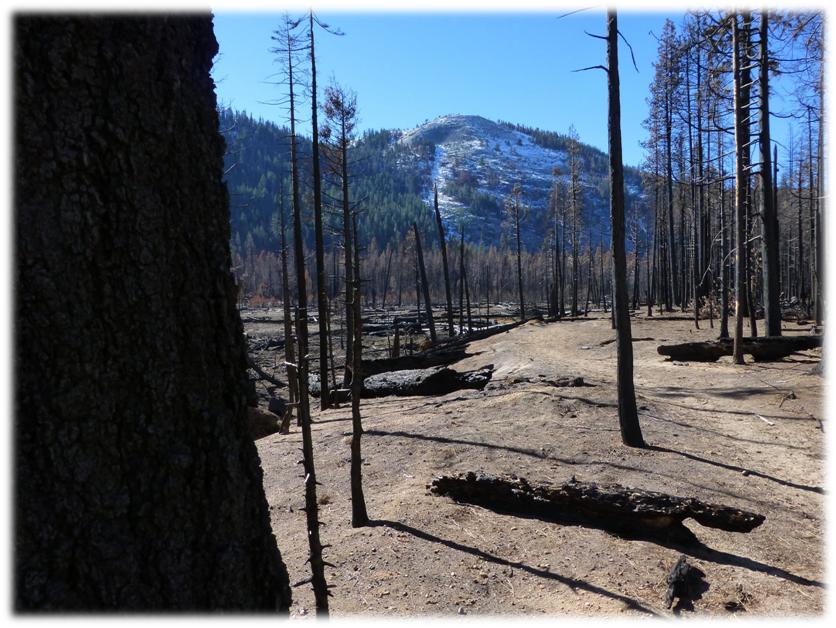
You are probably wondering how Bunnell Cascade and Bunnell Point got its name. Lafayette Houghton Bunnell (1824-1903) was 27 when he became a member of the Mariposa Battalion that became the white discoverers of the Yosemite Valley in 1851 when they rode out in search of Native American tribal leaders involved in recent raids on American settlements. Discovery of the Yosemite, and The Indian War of 1851 (originally published 1880) contains his account of that event, beginning with the history of the battalion and the tribal unrest that inspired its creation.
He goes on to chronicle the unit’s march from its camp near Agua Fria into the mountains down the South Fork of the Merced River. Bunnell recalls his comrades’ reactions to the natural grandeur they encountered in the Yosemite Valley as well as the trivia of camp life and encounters with the native tribes they were sent to pacify. The book concludes with chapters of the Valley’s history after 1851, discussions of the region’s flora and fauna, and a chapter on the discovery of the sequoias and their later exploitation.
Prior to his participation with the Mariposa Battalion,Bunnel had served in Mexican War and came to California in1849. It is said that he became familiar with Indians and learned Indian languages. After the Mariposa Battalion, Bunnell remained in California, trading, mining, and surveying, for five or six years, then returned to La Crosse, Wisconsin.
He enlisted in U. S. Army on April, 1861, serving throughout the Civil War. He was commissioned an assistant-surgeon in1865, then spent the remainder of his life in Minnesota. Bunnell Point has gone by other names in the past. It was called “Sugarbowl Dome,” until it was renamed Bunnell Point. The unnamed dome 0.7 mile west on the other side of the Merced River has also been known as “Sugarbowl Dome.”
Bunnell Cascade also had earlier names such as “Washburn Cascade,” “Diamond Shower Fall,” and “Little Grizzly Falls.” The present name was approved in 1932.
After eating lunch, I wandered around a little bit. The fire actually burned a little more above us. We saw the torched remains of manzanita in the rocks.
We headed back down the trail through the burn. Gail spotted some green vegetation starting to make its way though the blackened dirt. When we started looking closer, we saw quite a few new plants, leading the way for the slow recovery that this area will be going through for a very long time. (Photo of me taking pictures by Gail Gilbert)
As we hit those shady areas, the trail had started to melt a little bit but in the more protected areas it was iced over as it was in the morning.
This hike was a long day. We had hit the trail around 8 a.m. and got back to the car about 4:30. The snow and icy trail slowed us down a bit, but had another wonderful day in Yosemite National Park.
Sources:
Wikipedia
Day Hikes in the Tioga Pass Region, John Carroll O’Neill & Elizabeth Stone O’Neill, 2002
http://en.wikipedia.org/wiki/Little_Yosemite_Valley
http://www.nps.gov/yose/blogs/fireinfo.html
http://en.wikipedia.org/wiki/Meadow_Fire
http://en.wikipedia.org/wiki/Lafayette_Bunnell
http://www.yosemite.ca.us/library/discovery_of_the_yosemite/
http://www.yosemite.ca.us/library/place_names_of_the_high_sierra/b.html
http://www.findagrave.com/cgi-bin/fg.cgi?page=gr&GRid=59216244&ref=acom

